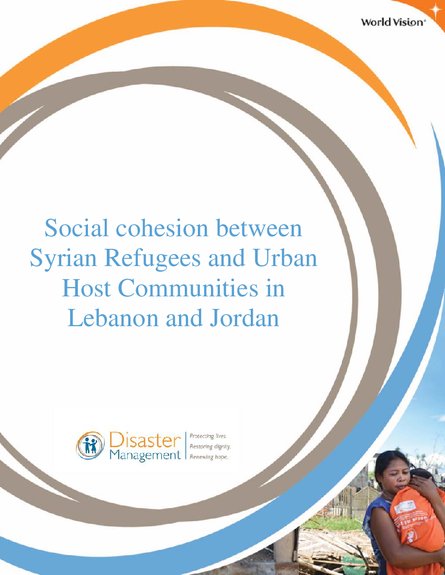
After more than four years of civil war, the Syrian conflict has generated massive protracted displacement of over four million refugees, the majority of whom reside in non-camp and/or urban settings in countries such as Lebanon and Jordan.2 In Lebanon, for example, since 2010 more than one million Syrian refugees have arrived, contributing to a situation of rapid, unsustainable urbanisation in an already vulnerable and fragile context.3 This poses new and diverse challenges to authorities, humanitarian actors and receiving host communities, who – in addition to refugees and IDPs themselves – are struggling to adjust to long-term social, economic and demographic shifts and pressures associated with displacement.4 One such challenge is how to foster social cohesion and mitigate rising social tensions between refugees and host communities in these non-camp, urban contexts. Tensions have emerged between refugee and host communities and between local communities and administrative authorities. In the case of Lebanon and Jordan, this is described as leading to a potential tipping point. In an effort to protect and enhance the somewhat fragile stability in both countries, key strategic objectives have been identified in this report for national, international and local stakeholders.5 This literature review aims to demonstrate that social cohesion (defined loosely as the nature and set of relationships between individuals and groups and between those groups and the institutions that govern them in a particular environment) matters for humanitarian action.
Links
Resource collections
- UN Habitat - Urban Response Collection
- Urban Response - Urban Crisis Preparedness and Risk Reduction
- Urban Response Collection - Community Engagement and Social Cohesion
- Urban Response Collection - Economic Recovery
- Urban Response Collection - Environment and Climate Change
- Urban Response Collection - Housing, Land and Property
- Urban Response Collection - Urban Crisis Response, Recovery and Reconstruction
- Urban Response Collection - Urban Resilience